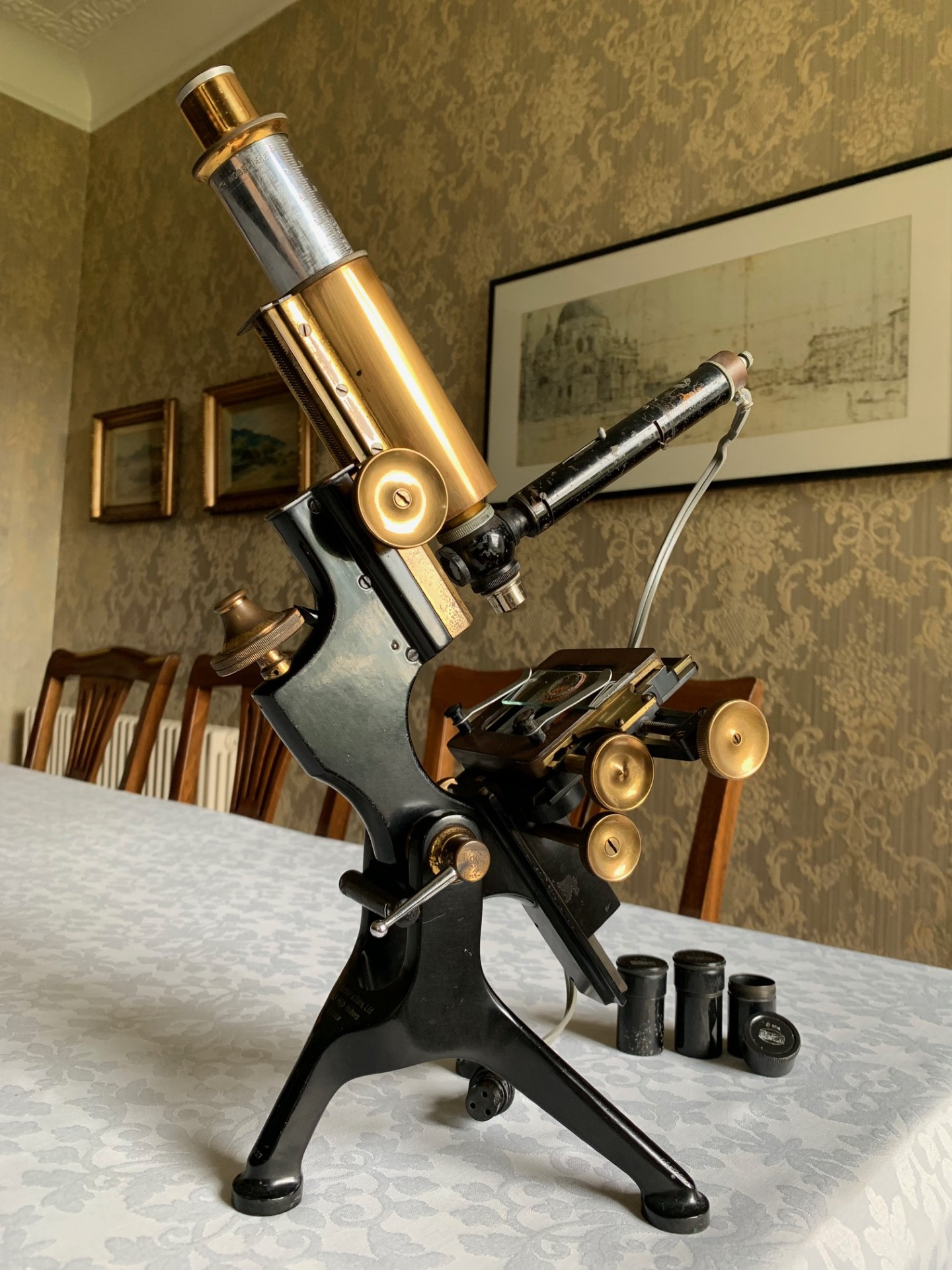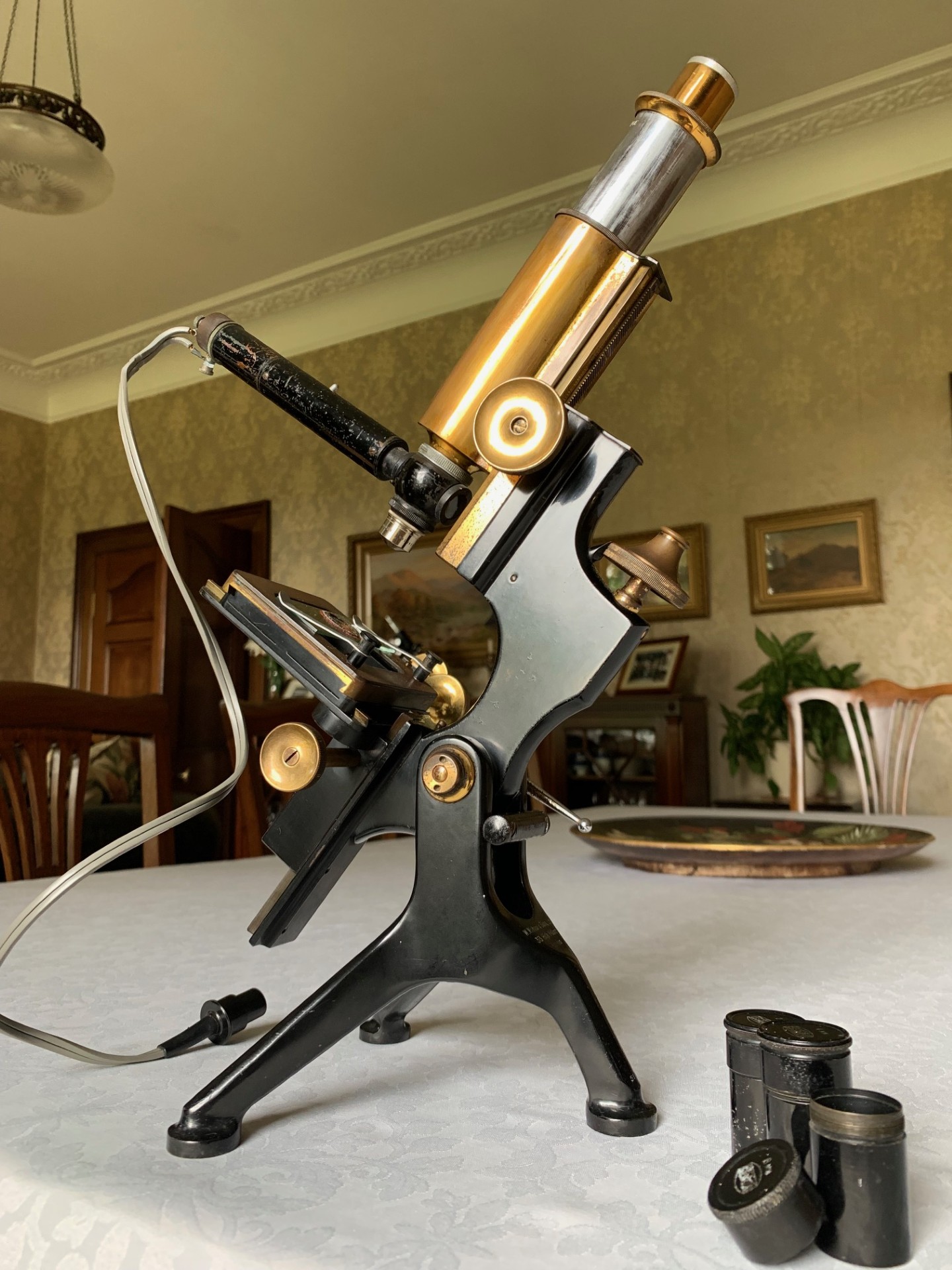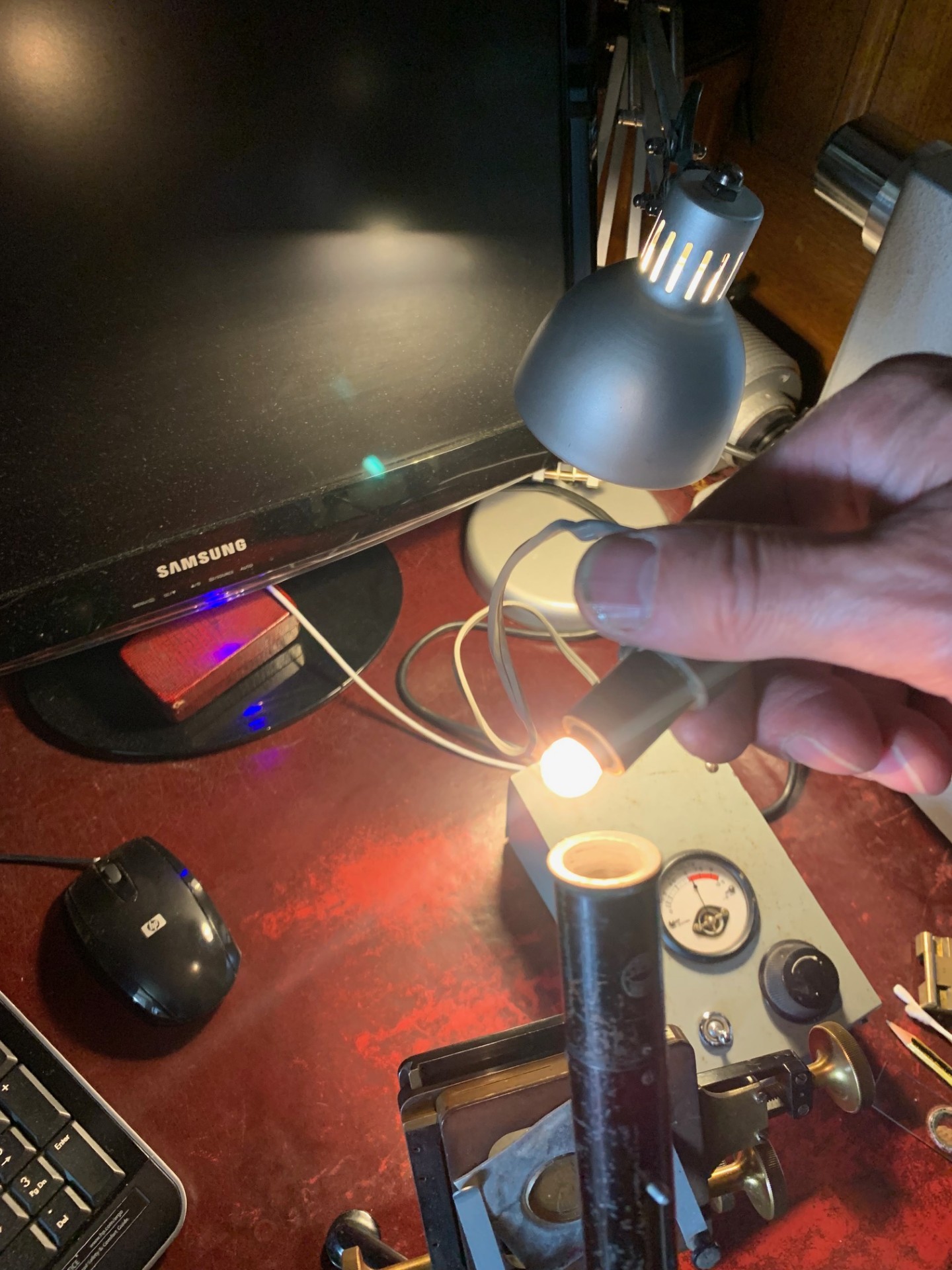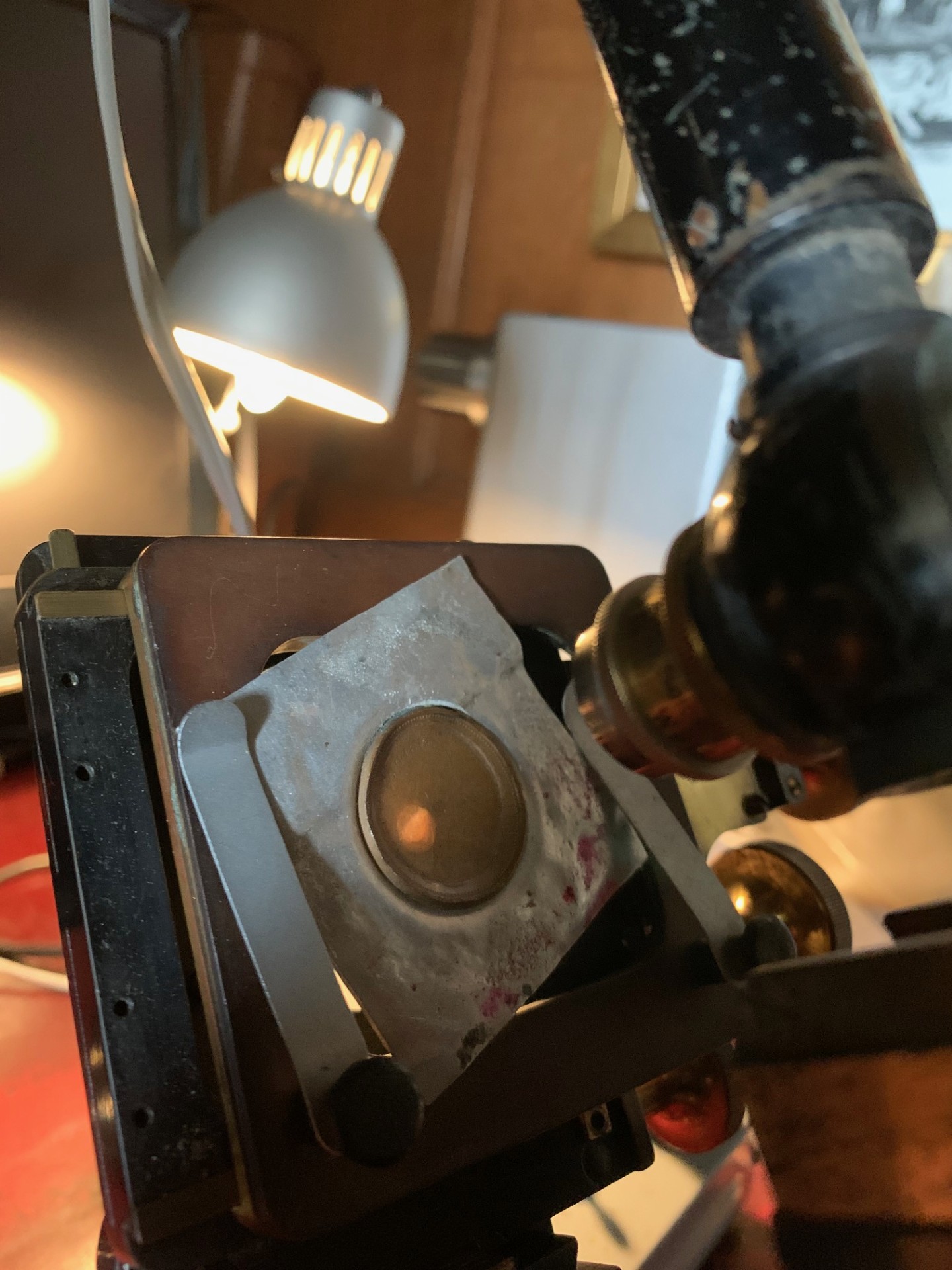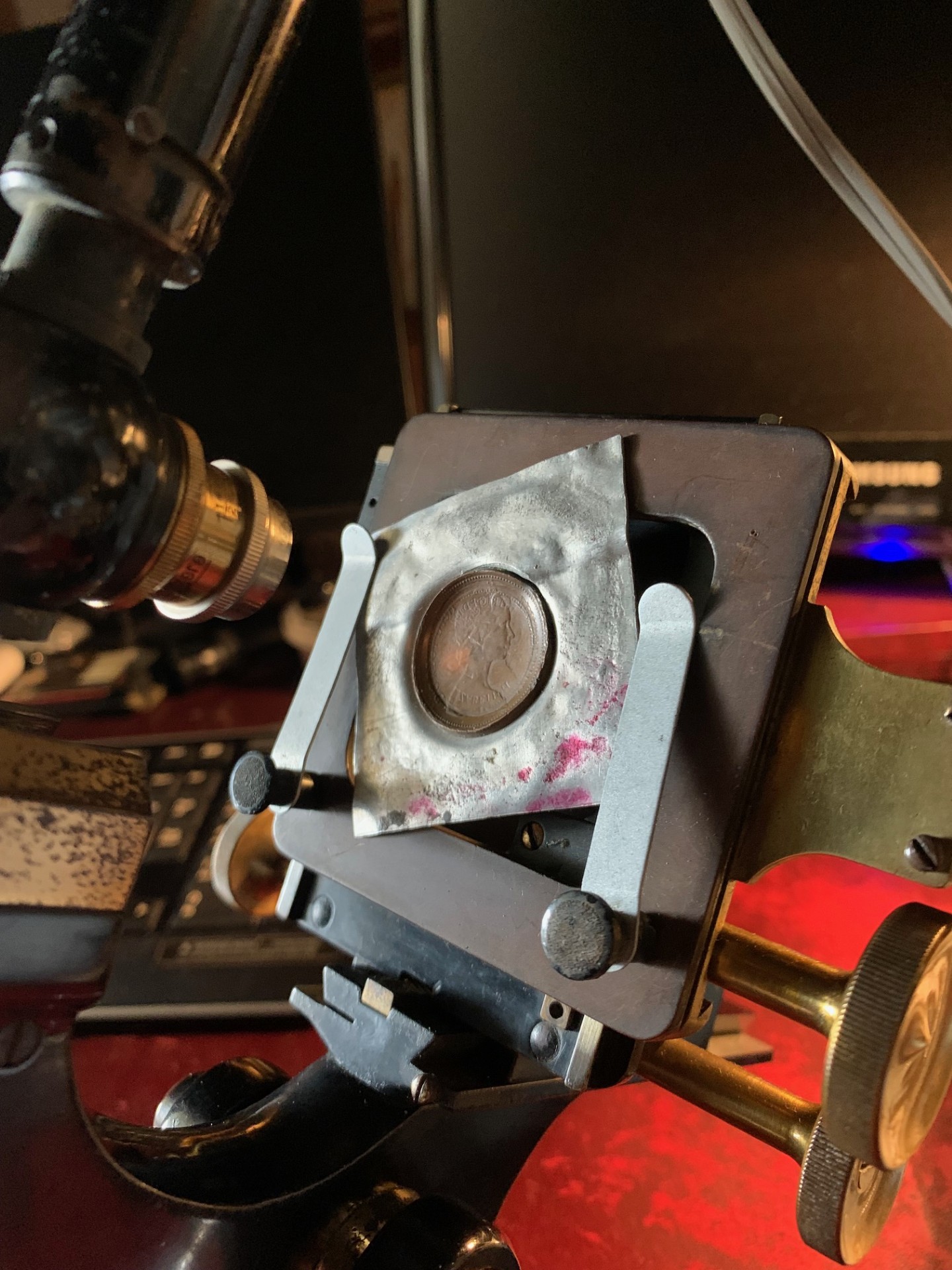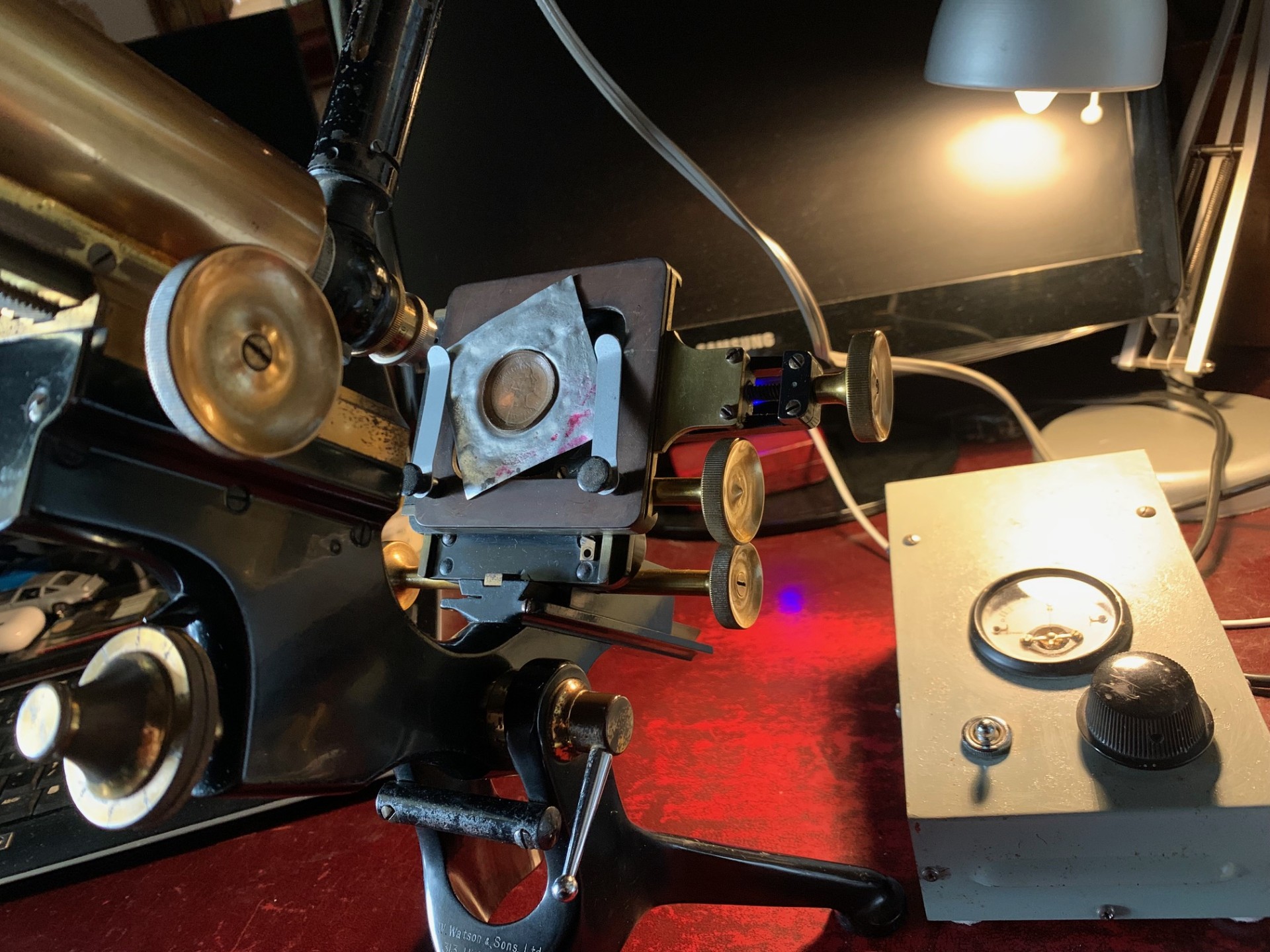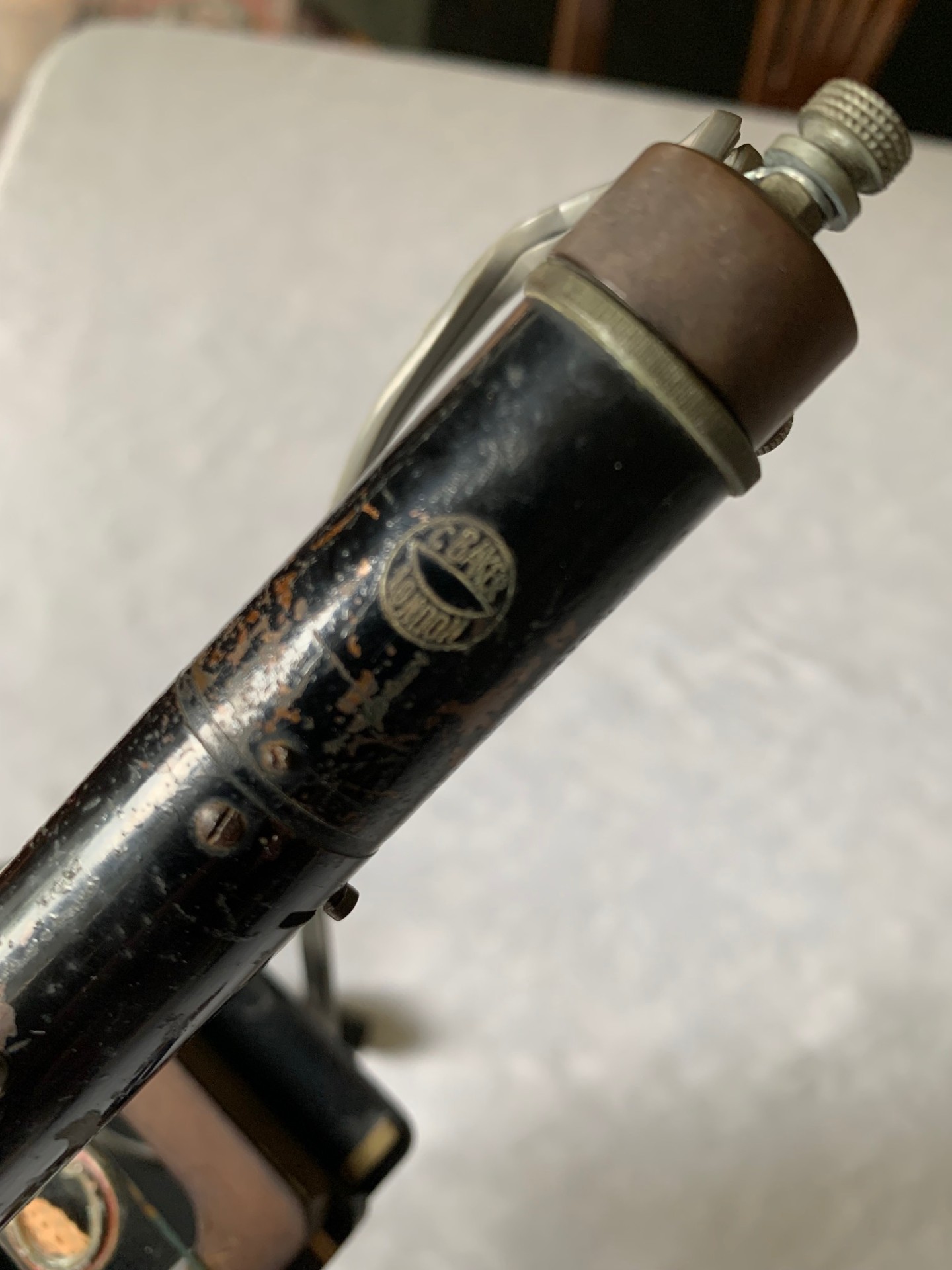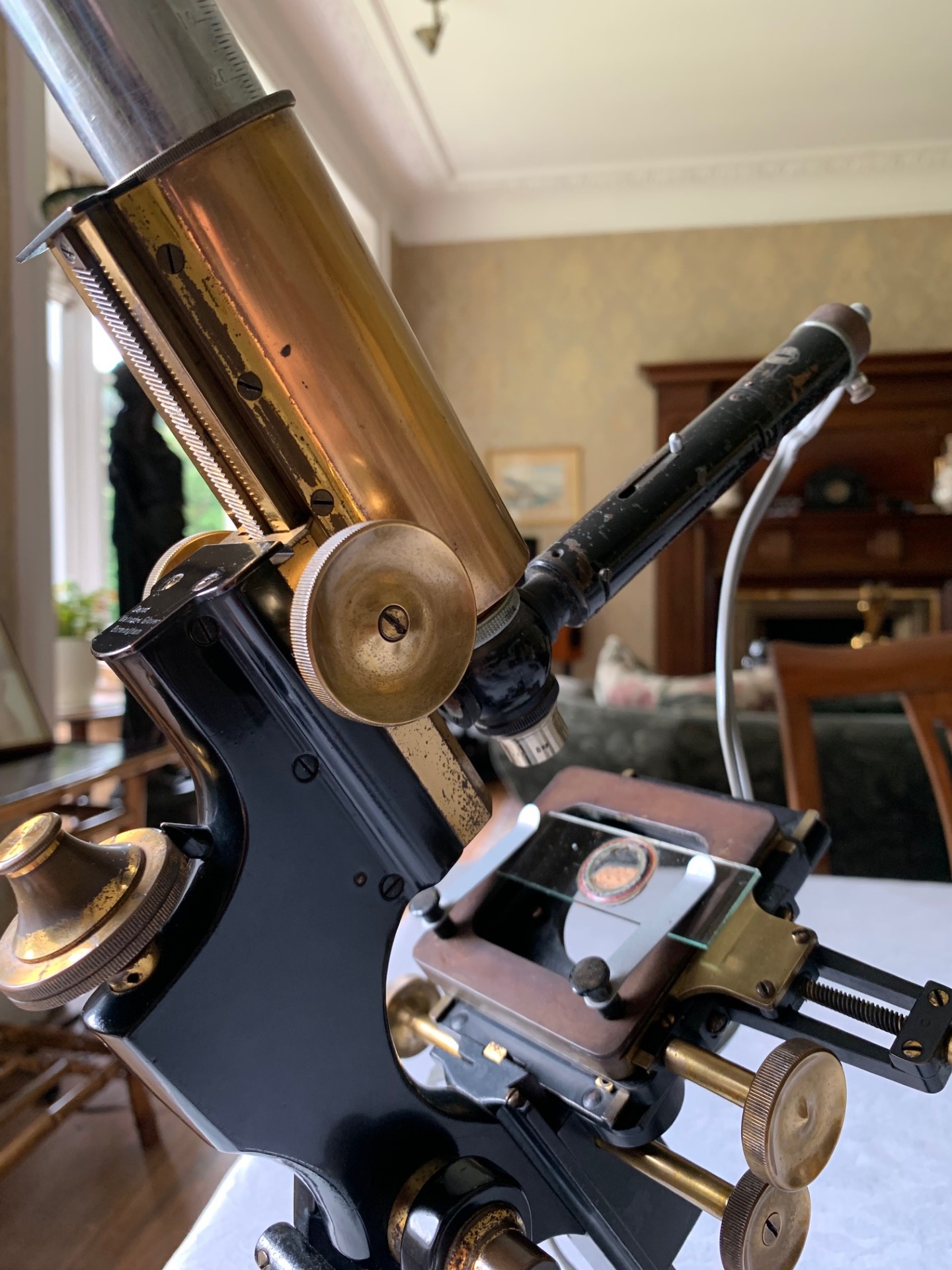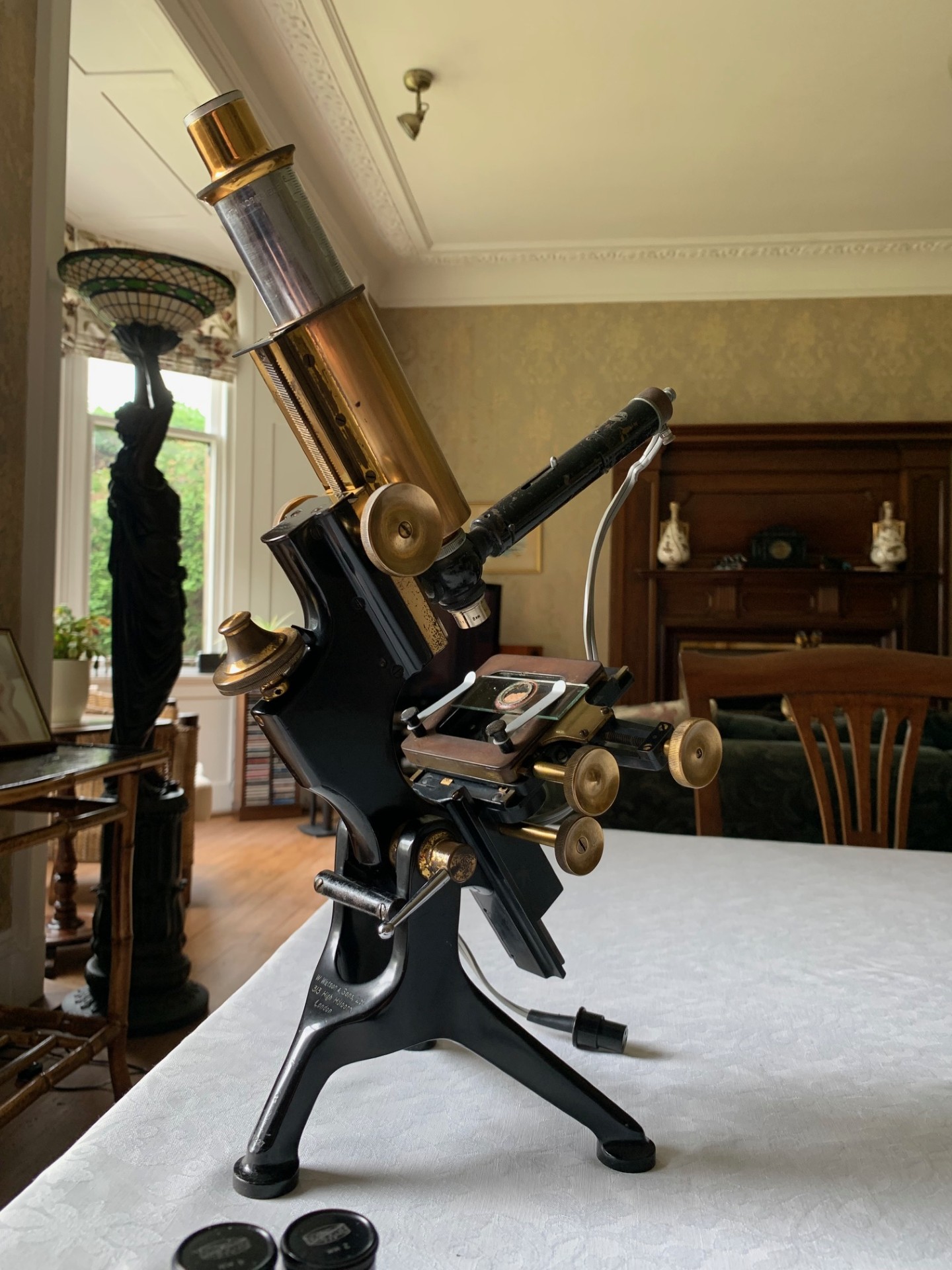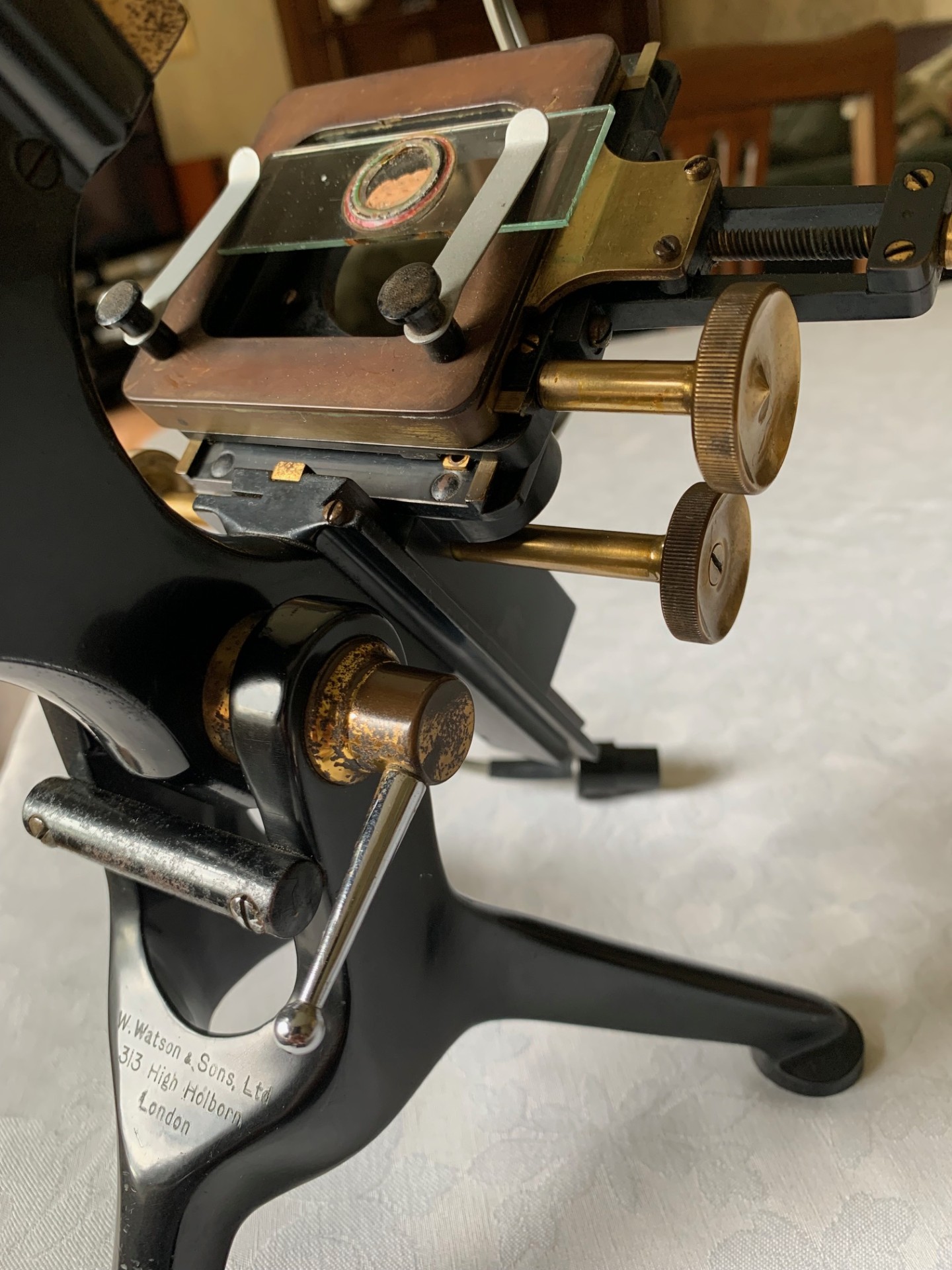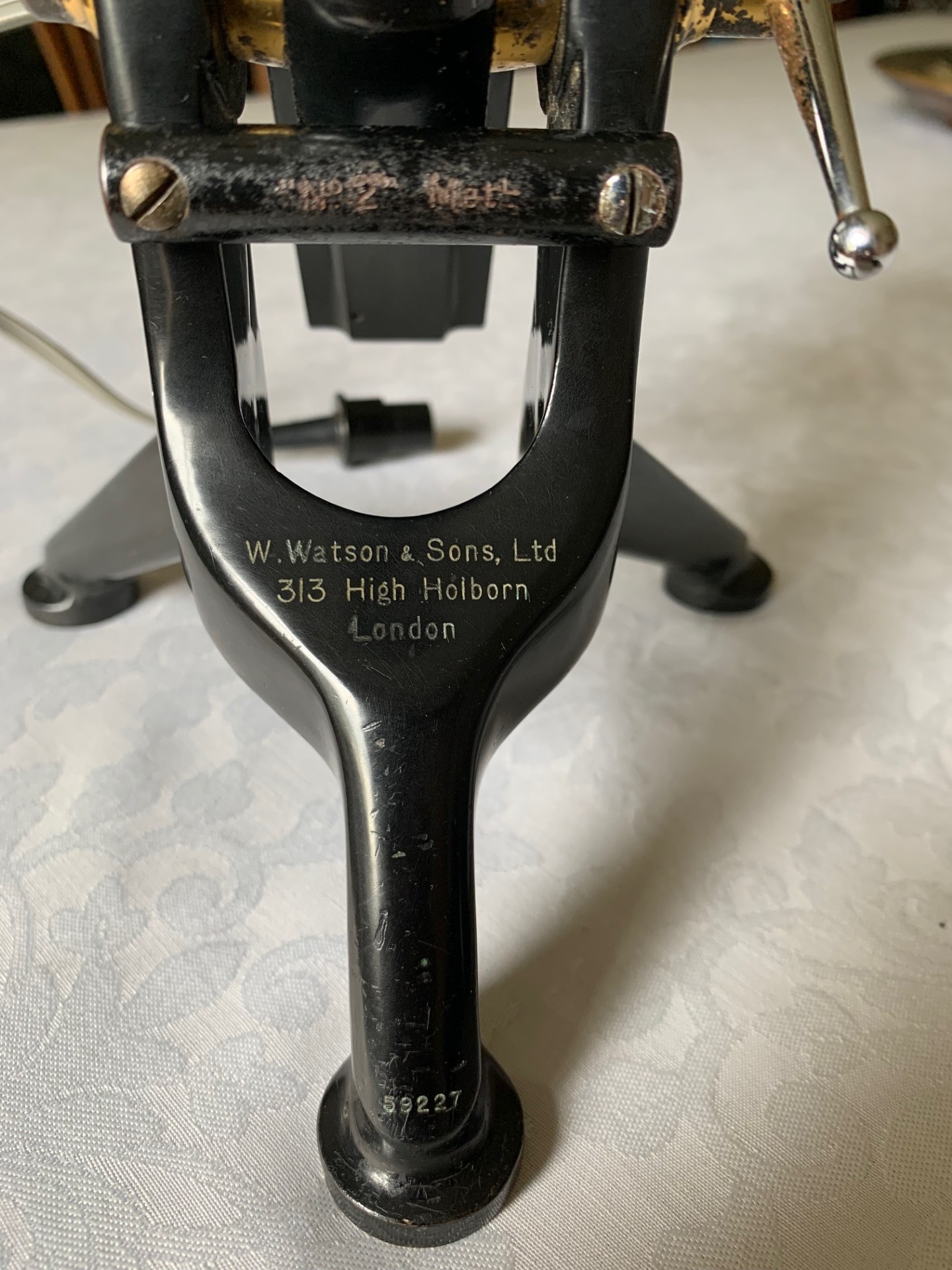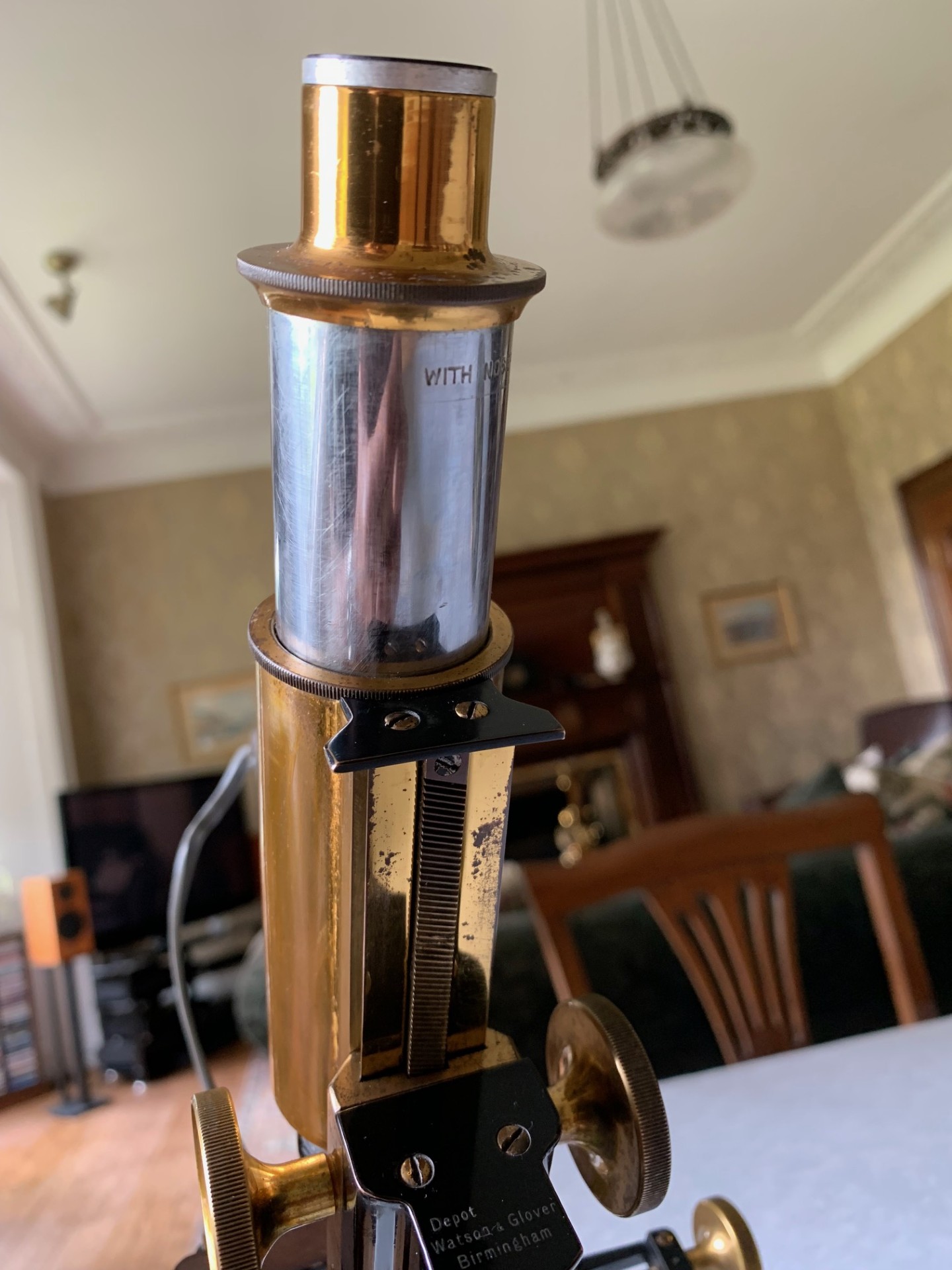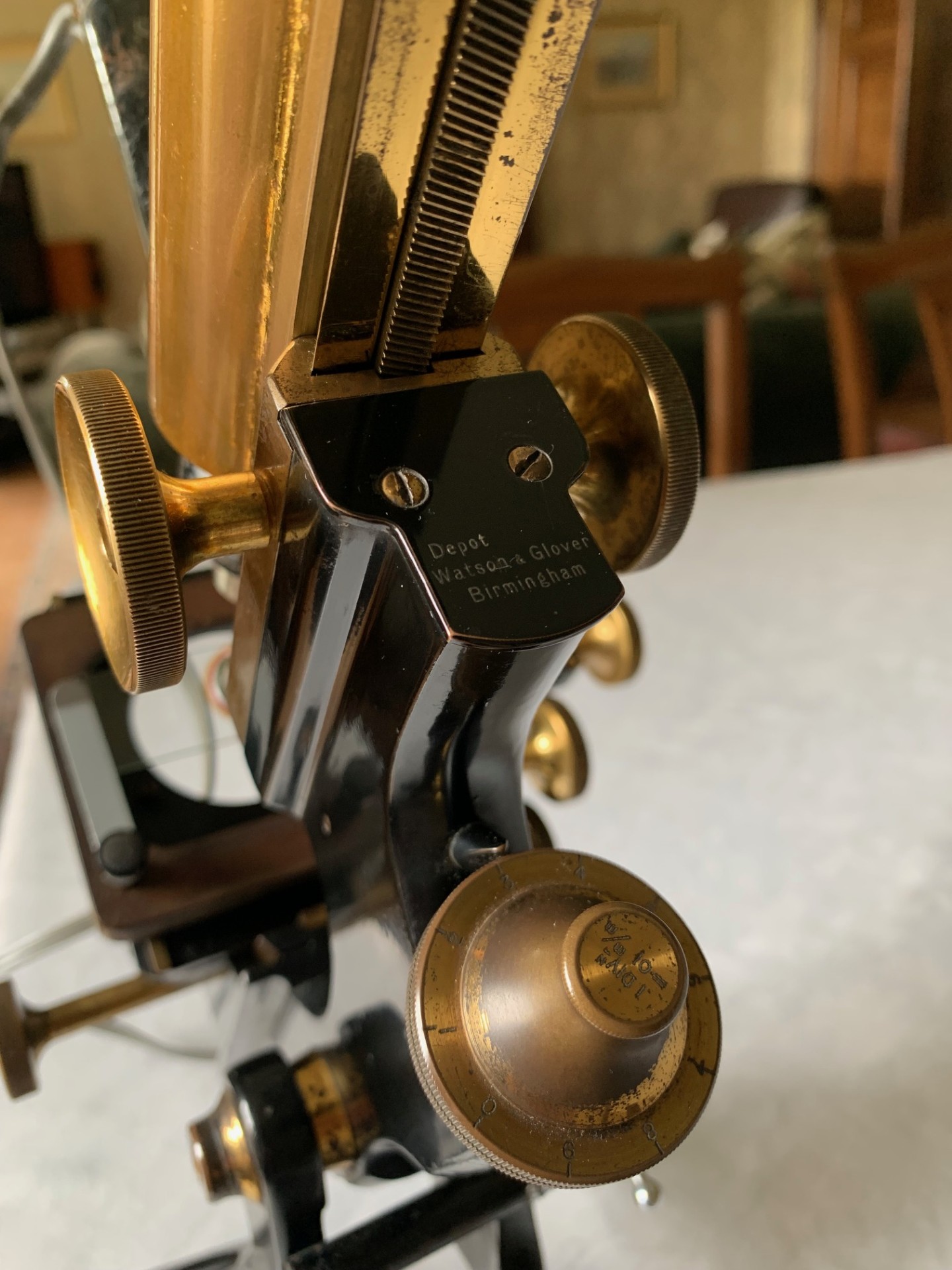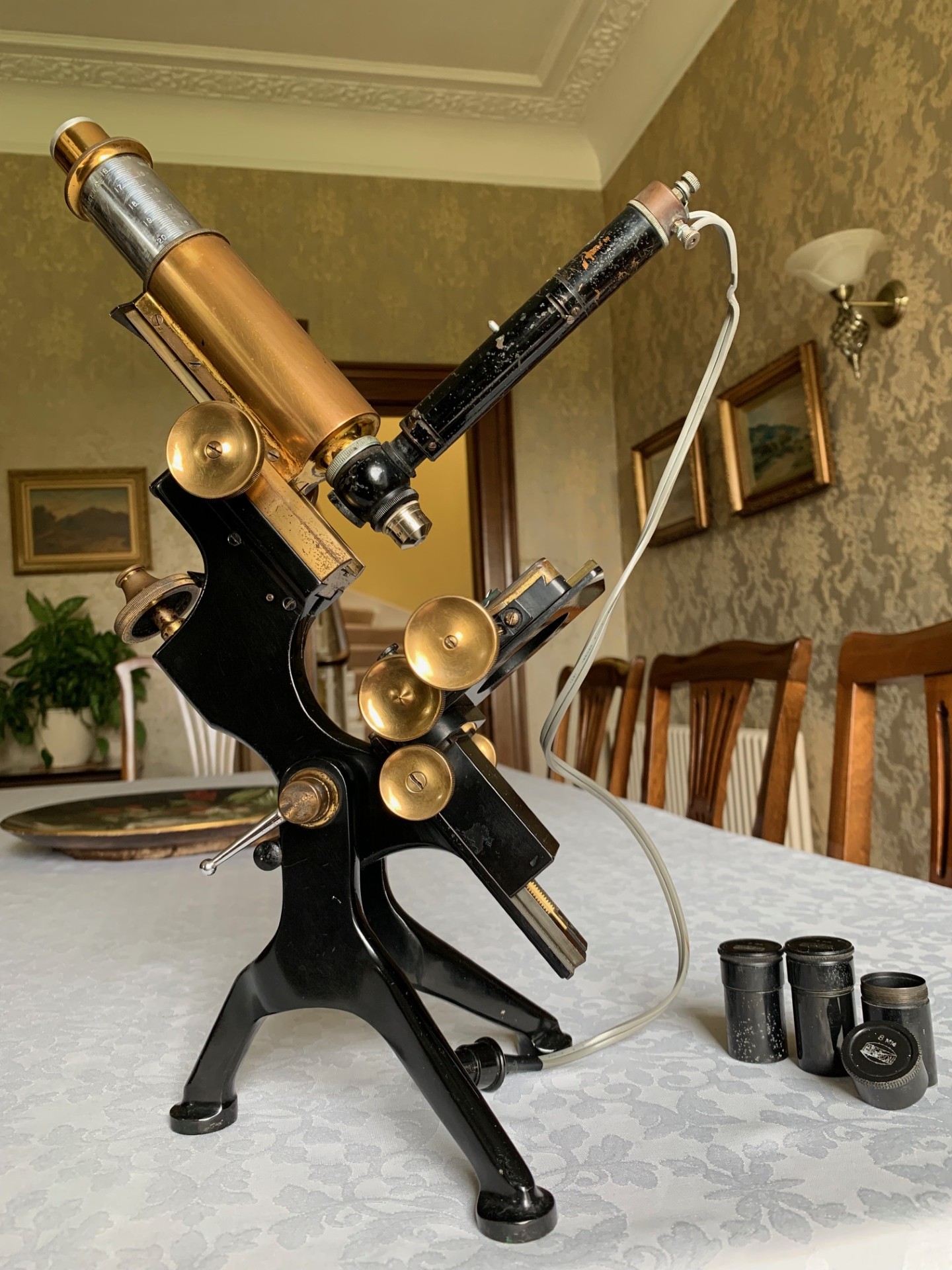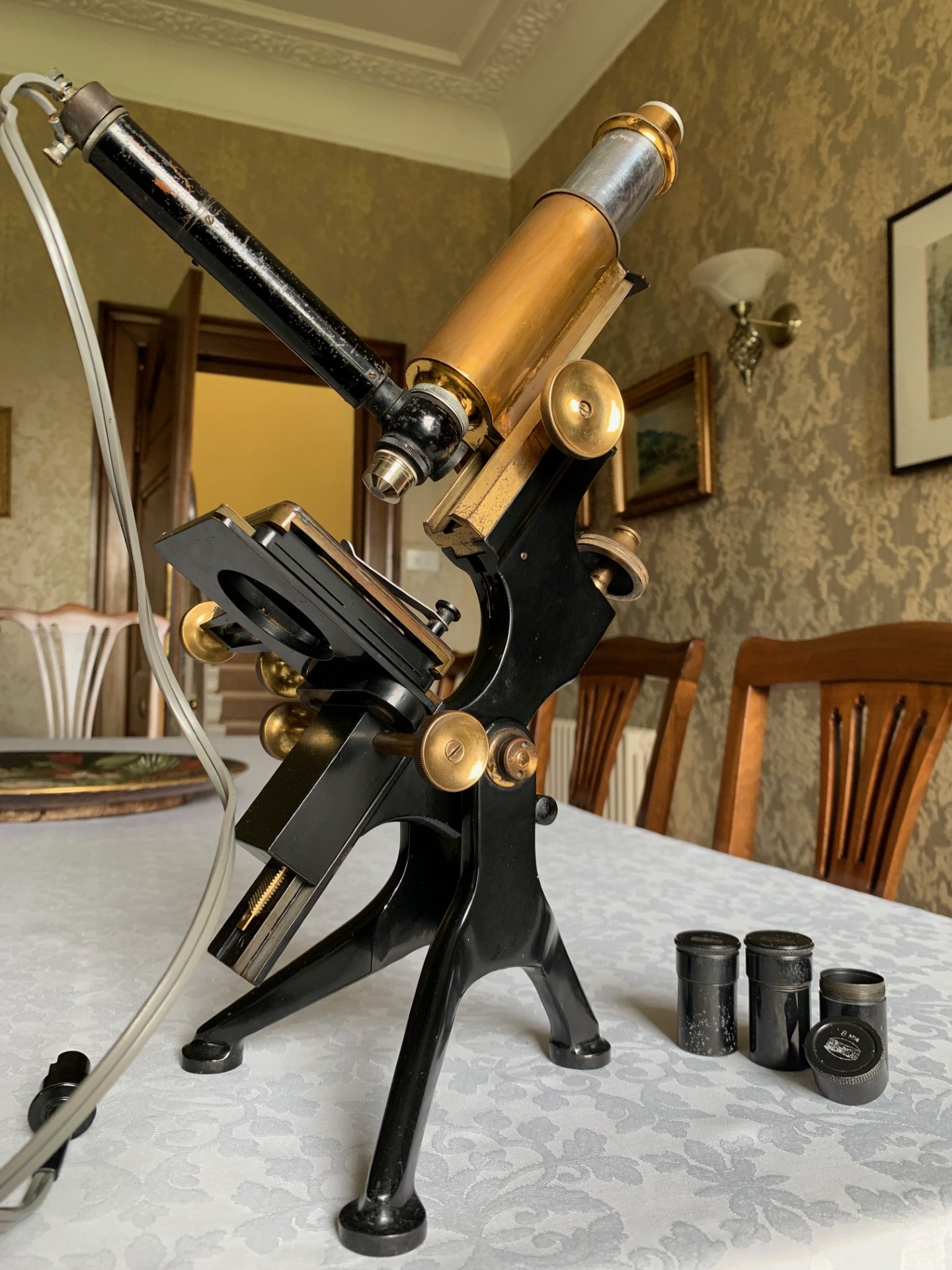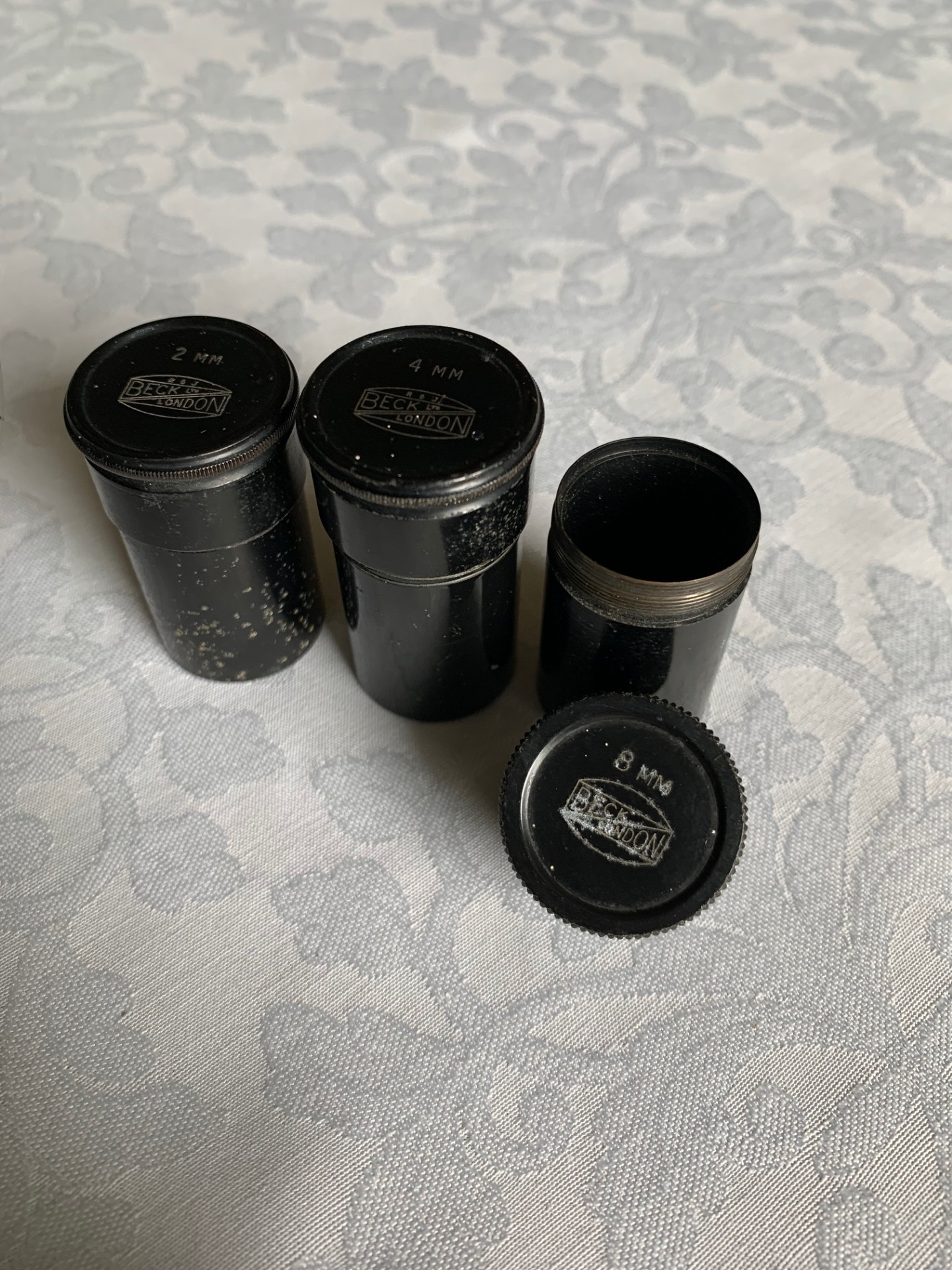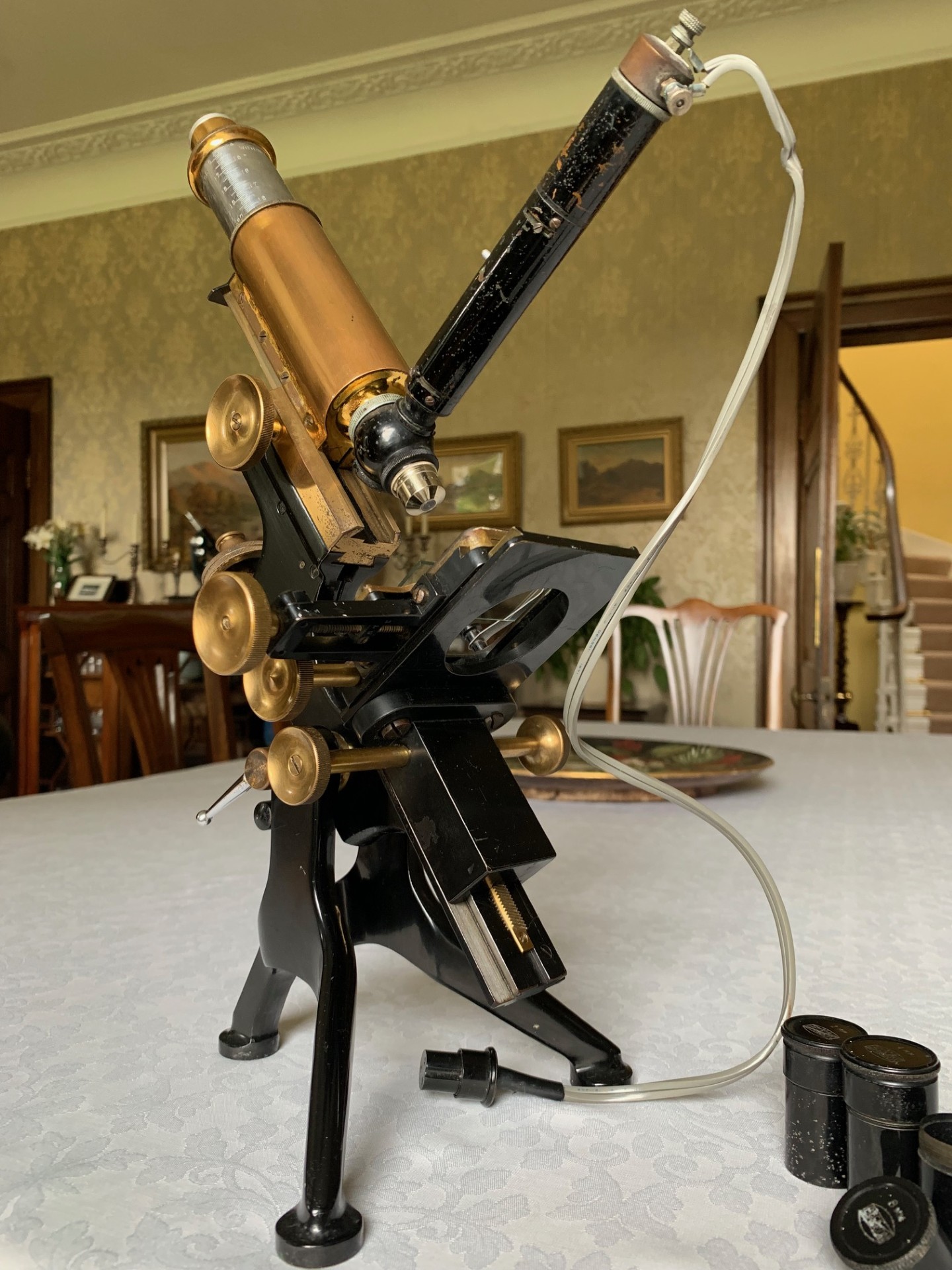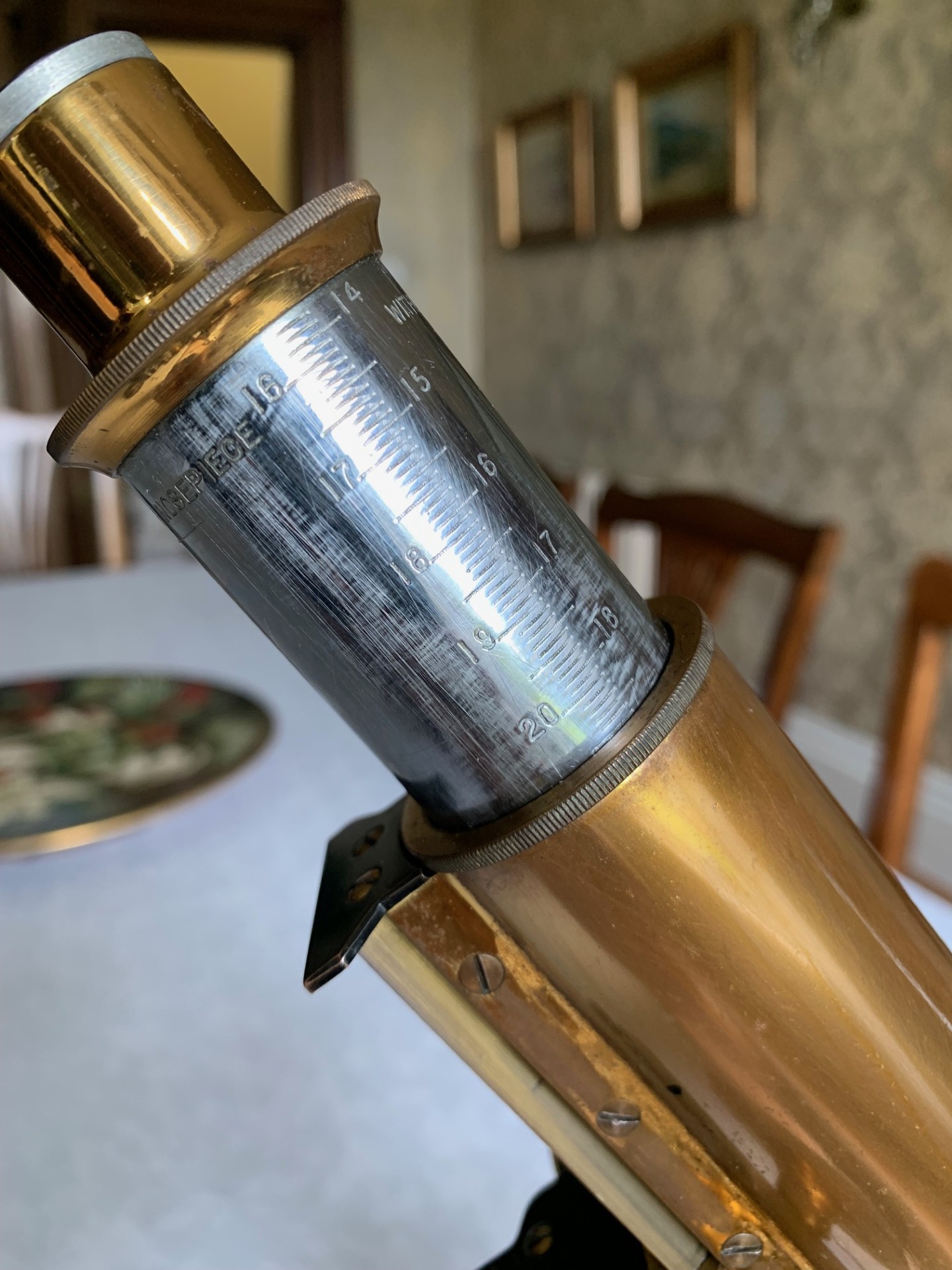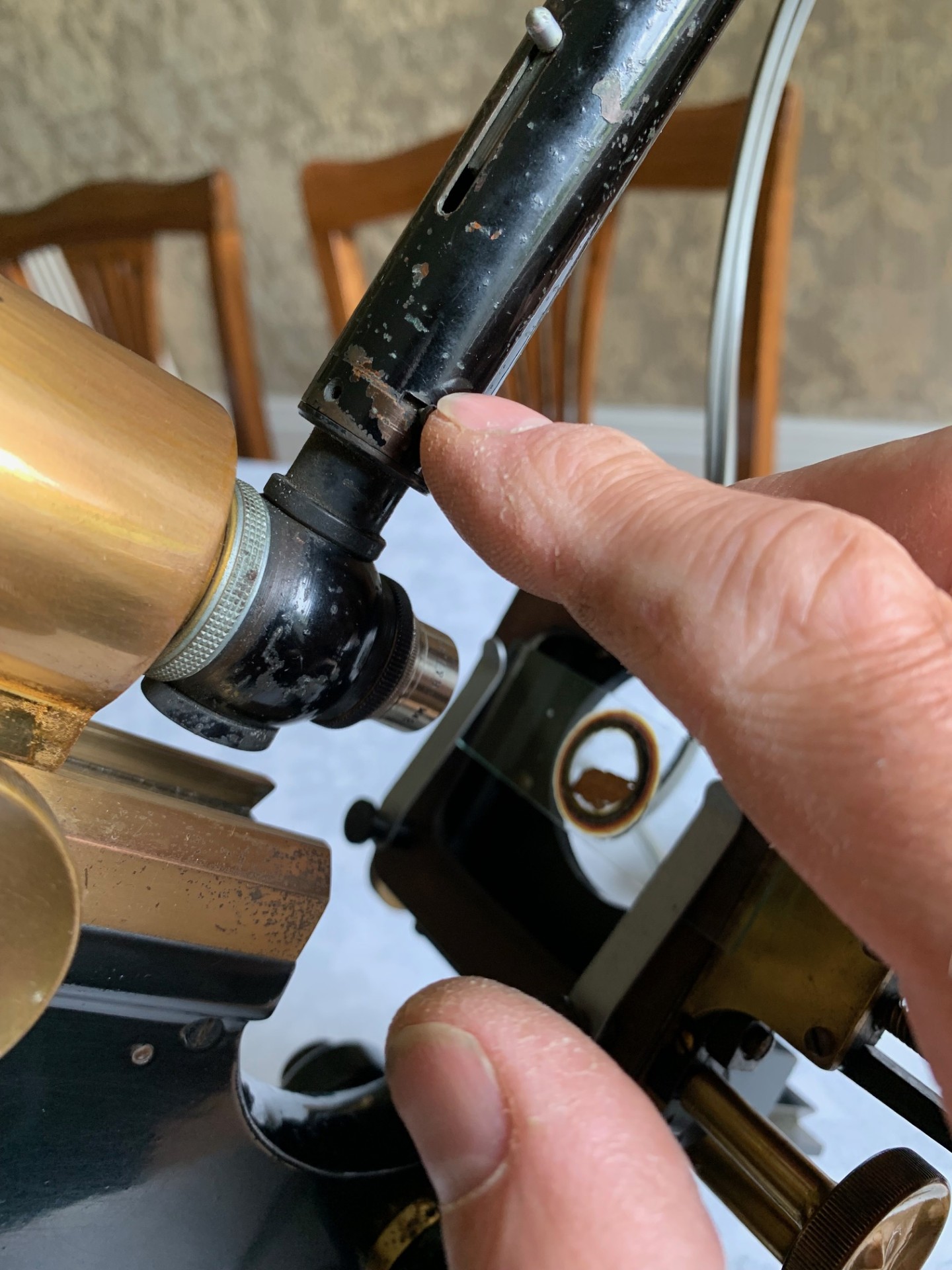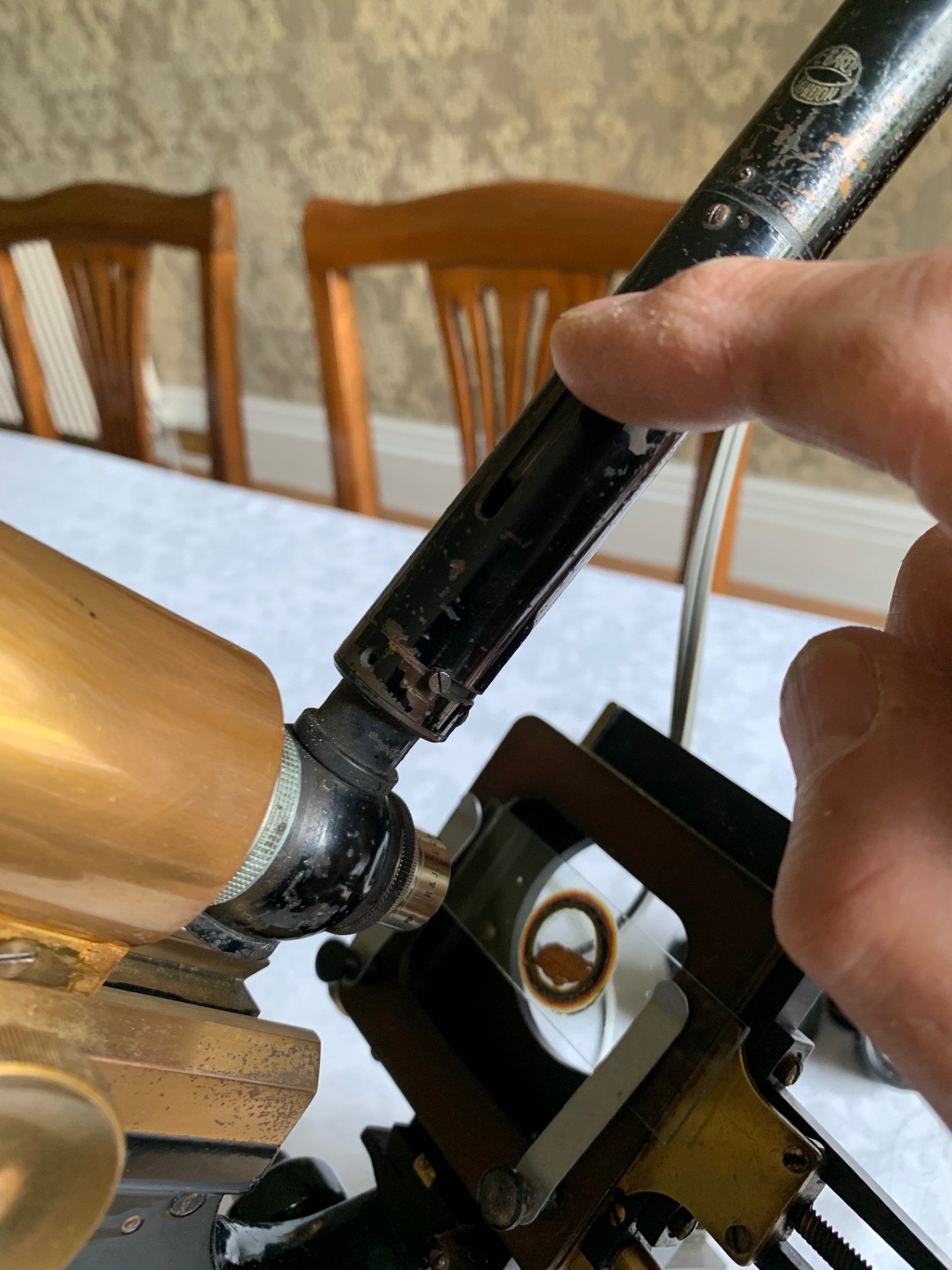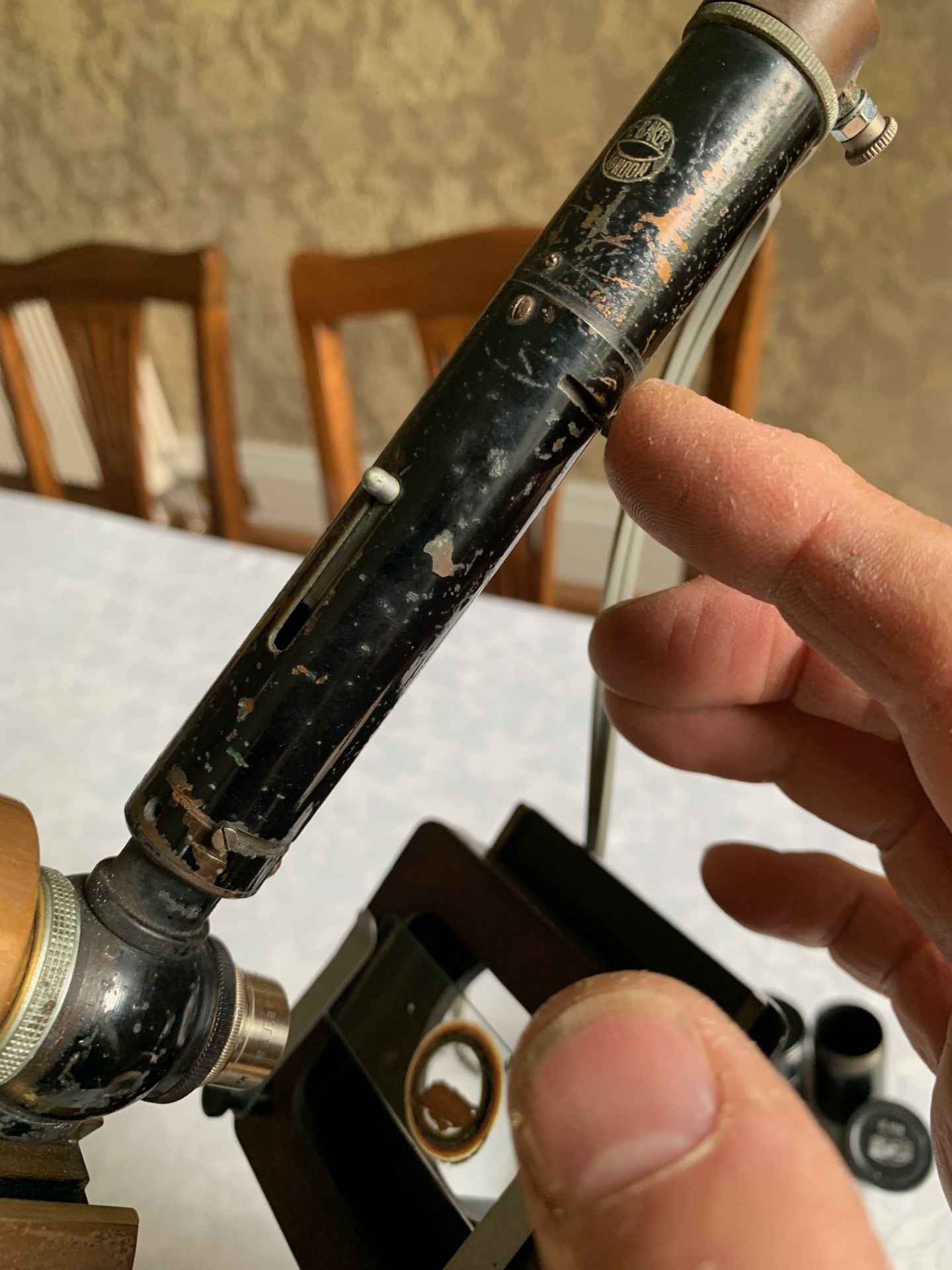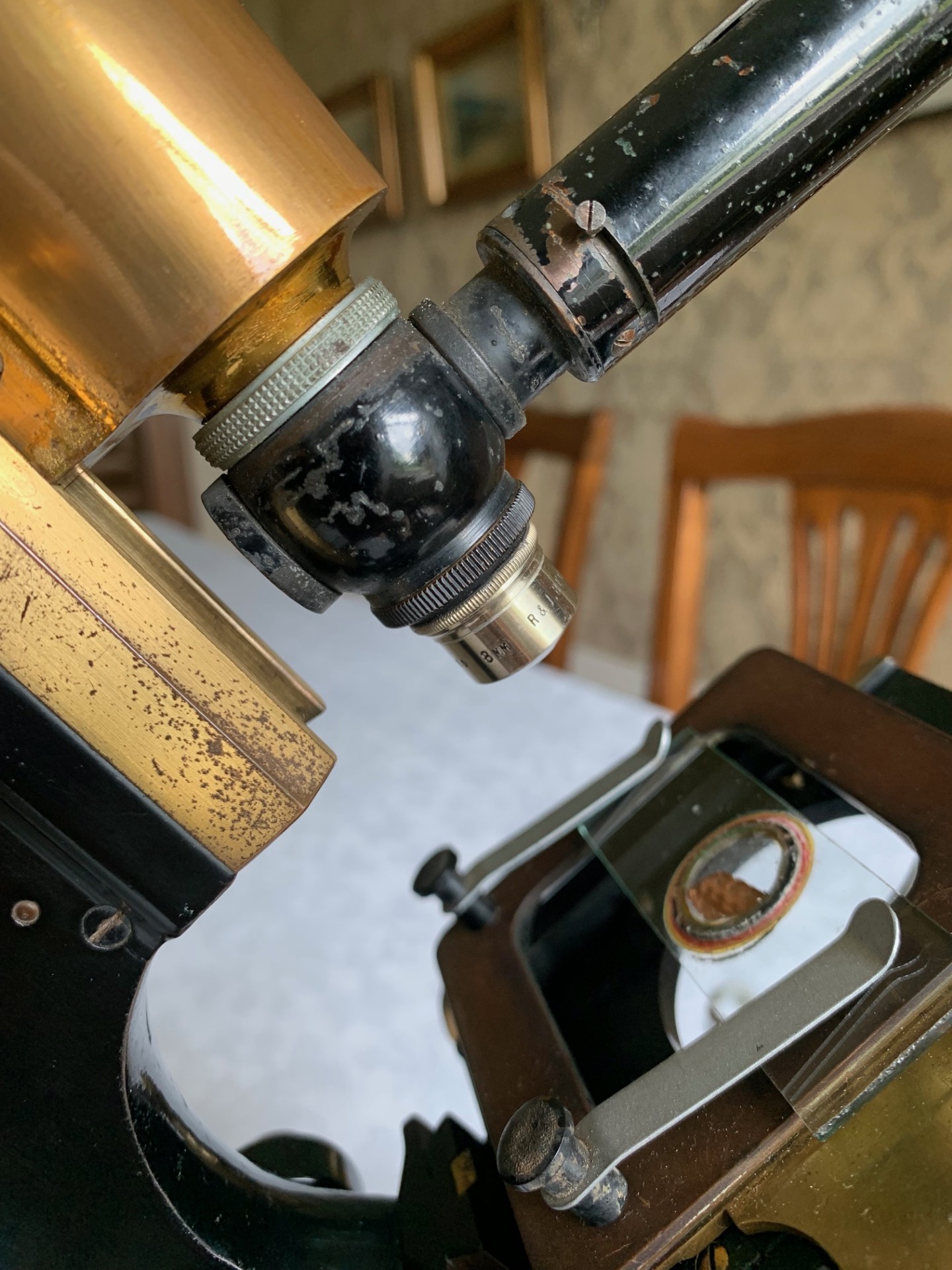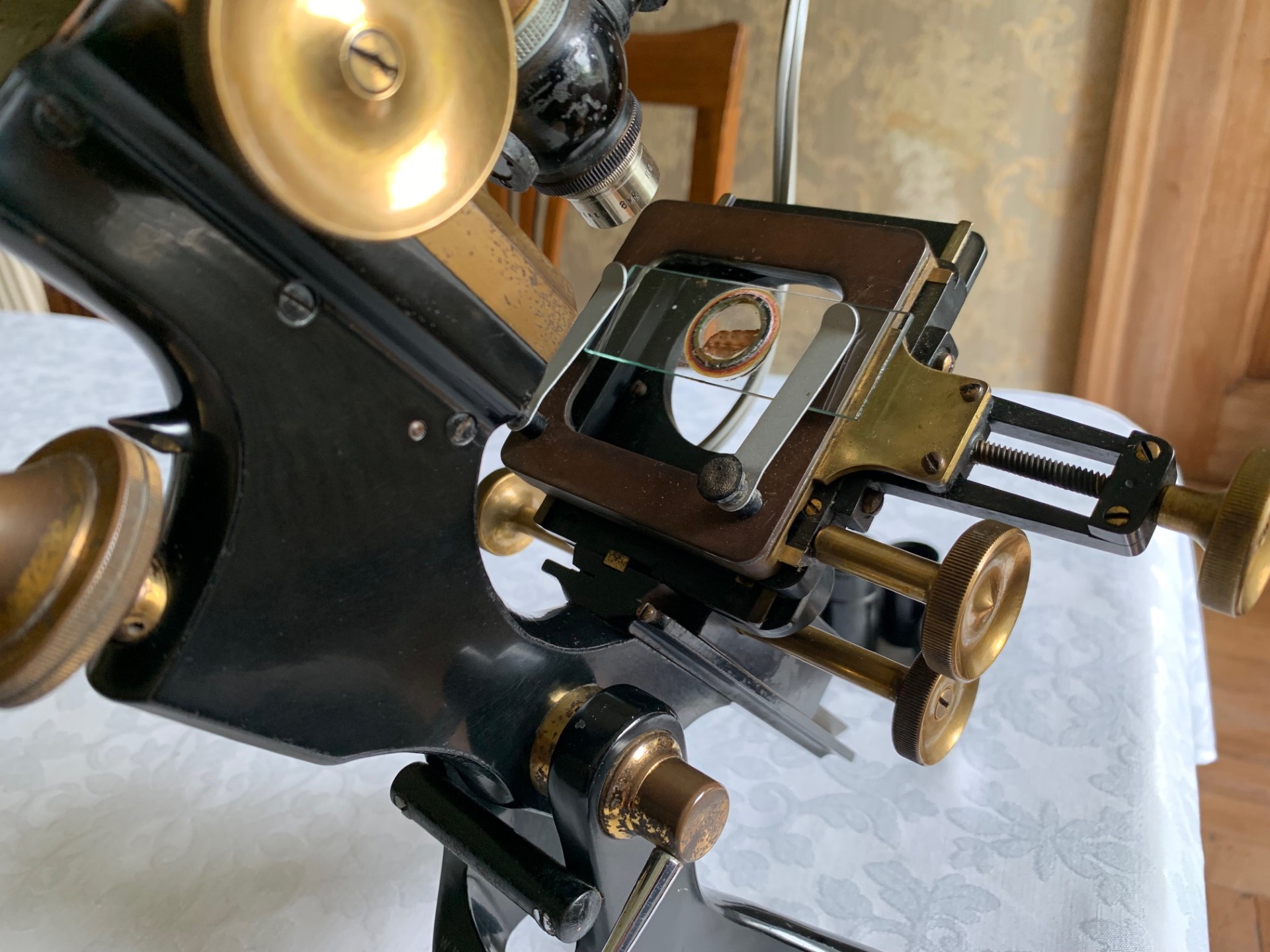Vintage W. Watson & Sons Ltd – Edinburgh H No.2 Metallurgical Microscope – c1936
£225
Good working condition example of the Edinburgh H No.2 Metallurgical variant that was originally retailed by sales agents Watson & Glover of Birmingham.
Circa
1936
Maker
W. Watson & Sons Ltd
Country of manufacture
UK and Ireland
Description
Offered for sale is a rare variant of the Edinburgh model microscope by W. Watson & Sons Limited of London. It’s a specialist model, being the No.2 Metallurgical variant of Watson’s popular Edinburgh H model, designed specifically for incident light microscopy and the study of surface features on solid/opaque specimens such as metallic surfaces. This example dates to around 1936 based on the sequential Watson production number of 59227 which is engraved onto the rear tripod leg. It appears to be in original condition as far as I can tell and has obviously been well used during its service life.
The Edinburgh pattern model of microscope was produced by Watson between 1887 and around 1945; its long production run giving us a firm clue regarding just how good this model of microscope was in its heyday and over that long production cycle Watson regularly updated and improved the model, so what you see here is a mid/late production example with specialist features for metallurgy. The Edinburgh stand was originally developed by Watson in collaboration with a professor and lecturer in bacteriology at the University of Edinburgh, hence the Edinburgh designation. With its signature rear cross-member giving that classic “H” look the Edinburgh H is a fine example of British optical engineering with a design and style essentially dating back to the Victorian era.
In terms of condition the brass-work is showing signs of age and some use-related tarnishing and lacquer losses here and there although not that bad for a well used instrument and it still catches the light quite well.
Turning to the technical details, construction is a heavy gauge cast tripod with twin uprights supporting a pivot with tension adjustment on the right hand side via a lever mechanism all supporting a Lister-type upper limb. For the optics, this Watson is fitted with an eyepiece draw-tube with graduation markings. The main tube is in brass with lacquer finish. Coarse focus via rack and pinion, with the main tube holding in position as it should. Fine focus is via a single thumb-wheel at the rear of the upper limb being a vernier screw acting on long lever, which also works well.
The instrument is supplied with an appropriate vintage 10x magnification eyepiece. It’s also got three vintage objectives for uncovered specimens by R & J Beck, as follows:
– 8mm – 20x
– 4mm – 40x
– 2mm – 100x
The objectives have to be fitted to the optical tube one by one and overall, the range of magnification provided by this metallurgical Watson therefore runs from about 200x to around 1,000x.
There’s a vertical illuminator by C. Baker fitted. This contains the following:
– field iris
– slider adjustment
– second iris
– 6V illumination bulb (working when tested) powered by low voltage Watson supply unit (not supplied as part of listing)
– angled glass reflector
– slider adjustment
– second iris
– 6V illumination bulb (working when tested) powered by low voltage Watson supply unit (not supplied as part of listing)
– angled glass reflector
The vertical illuminator allows incident/reflected light study of samples – when correctly adjusted it sends a pencil beam of light that hits the glass reflector and is channeled down through the objective lens and onto the subject under examination. Light is then reflected off the subject back up through objective and into the eyepiece for examination. At the end of the listing photos you’ll see that the vertical illuminator produces a small spot of yellow/orange light on the sample. Ideally it needs further adjustment and the glass reflector looks like it needs cleaning or replacing.
The instrument tilts for inclined viewing, holding in position as it should and can be tightened at the main pivot as may be required. The stage is a fully mechanical brass stage as found on the Edinburgh H models, with x/y adjustment controls on the right-hand side of the stage. It has a pair of stage clips for holding samples steady during viewing and inclination. The stage has height adjustment via rack and pinion with double-sided thumb-wheel adjustment. The stage is therefore in theory able to accommodate samples of different thicknesses up to around 3 or 4cm, for inspection via incident illumination. Stage height adjustment can also be used as the coarse focus control.
This being a metallurgical instrument, there’s no technical sub-stage. There’s also no case with the instrument at present.
Owing to the weight and delicacy of this vintage metallurgical microscope, it will be partially dismantled, very well wrapped for shipping and dispatched by insured courier upon receipt of cleared funds.
Please study the photos as they also form part of the description.
Thanks for looking – please also check out my other listings if you get a chance.
Ask the Dealer
Dealer information
 Arcboutant Scientific
Arcboutant Scientific
Arcboutant Scientific based in Glasgow Scotland, with an interest in scientific collectables dating back to 1988. Now making available carefully curated fine examples, principally of antique microscopes and associated scientific equipment by quality English and Continental makers, to collectors world-wide.




